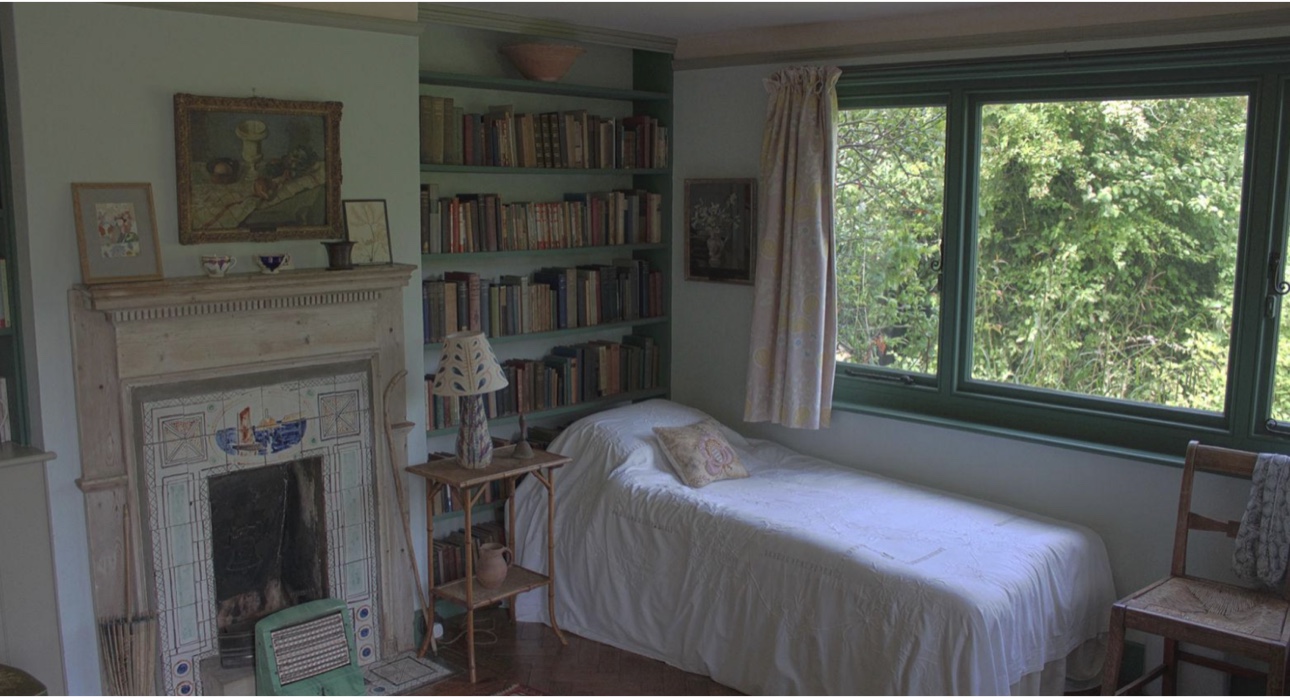Machines for Living:
OXFORD UNIVERSITY PRESS, 2020
BY JULIE ZOOK
MAY 6, 2022


OXFORD UNIVERSITY PRESS, 2020
BY JULIE ZOOK
MAY 6, 2022
In Machines for Living: Modernism and Domestic Life, Victoria Rosner traces the percolations of literary and architectural modernism into domestic spheres, describing ways that domestic modernism tracked with the potential of modernization to change patterns of domestic life and labor. The last chapter provides fresh documentation of Virginia Woolf’s personal architectural project, at Monk’s House. Rosner describes how Woolf’s architecture—amateur and passionate and sketched on the reverse sides of her writing paper—defined domestic architecture in terms of women’s intellectual lives rather than in terms of their chores.
A delightful feature that distinguishes Machines for Living from other works on domestic modernism is Rosner’s interarts approach. Rosner establishes a descriptive baseline of the modernized home in the introduction: fewer children; less live-in labor; moving the kitchen inward from the periphery; and the new hygiene, conveniences, and obligations afforded by appliances, electricity, and plumbing. She then follows “the transformation of modernist ideas as they move among different areas of technical and aesthetic practice” (21). This interdisciplinary tracking of transformations is organized into five chapters, three of which deal closely with architecture.

Figure 1. right
Monk’s House, Rodmell, UK. Courtesy of Elisa.rolle via Wikimedia Commons.
In Chapter 2, “Minimum Writing,” Rosner describes aesthetic austerity as a principle for design shared between literature and architecture, with special attention to ways that writers in both domains ascribe value, often of a moral character, to practices that eliminate ornament. Rosner describes such attachment of value to the minimal in familiar writings on aesthetics of Adolf Loos and Le Corbusier as well as in writings aimed at more practical things, such as domestic labor and housing crises, by such figures as Adolf Behne and Karel Teige. She locates temporal and formal variations in minimal writing and relates them to architecture through traces of functionalism and the shared notion that new forms of art could usher in new forms of living.




Chapter 3, “‘Fear in a Handful of Dust’: Modernism and Germ Theory,” describes how domesticity was altered by the eventual acceptance of pathogens as causes of disease, which damaged the relation of vision to danger. Even though germs were known to be microscopic, domestic design emphasized the hygienic superiority of perceptually clear environments, as though the aesthetic cleanness of distinct contours and unadorned surfaces were an adequate stand-in for the cleanliness that produces bacteriological safety. Rosner notes several existing accounts of the modernist empowerment of perceptual faculties (via fast cars, cinema, and the like) and adds to these her own description of how the acceptance of germ theory undercut the status of the senses as guarantors of health and safety.
In looking at both architectural and literary texts, Rosner removes modernist architectural writings from their protective packaging to situate them in a field of tense and generative responses to the advance of the machine age.
The last chapter, “The House that Virginia Woolf Built (and Rebuilt),” demonstrates, for me, what Rosner’s interdisciplinary, interarts approach can yield. If not for Rosner’s inclusion of literary scholarship and Woolf’s private writings, we might fall back on a too-easy reification of A Room of One’s Own
Virginia Woolf had a modest country place in Sussex called Monk’s House, and over two decades, Woolf and her husband Leonard endlessly renovated it. Monk’s House was and is stylistically unprepossessing. The numerous changes to the house were not primarily aimed at aesthetic improvement. They were instead focused on modernizing building systems and on program and layout. They included Woolf’s fit-out of a garden shed for summer writing, the knocking together of multiple rooms into a single free-flowing space with views, and the introduction of appliances that let her easily cook for herself and thus gain the ability to be at home, working, blessedly alone. With the profits from Orlando, the Woolfs undertook a substantial expansion, including Virginia’s own ground-floor bedroom that could only be accessed from the yard and not from the house interior. Rosner provides a thick interpretive context for these modest architectural interventions, describing Woolf’s desire to find detachment in a context of sociability, her irritation at creative projects lost to domestic disruptions, her peripatetic mode of work, and her sense of the importance of material permanence and domestic amenity as foundational to intellectual activity.